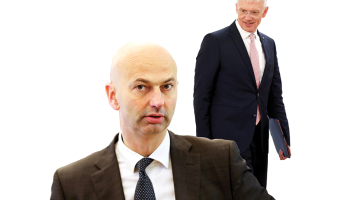
Ilustratīvs attēls no pixabay.com
According to Latvian Public Broadcasting, Vjačeslavs Dombrovskis, former economics minister and former education minister (and, also formerly, a student of mine as well as a former colleague at Stockholm School of Economics in Riga) is planning on launching a new political party.
One of the visions of the new party is to reach Swedish income levels (per person) in some 20 years, a catch-up exercise that has always been close to my heart and that I dearly saw pursued much more forcefully.
Lots of the emigration out of Latvia has been due to the possibility of earning higher wages abroad and in Figure 1 I present two of the countries where many Latvians have travelled to, namely Sweden and the United Kingdom. Although Latvian incomes, as measured by GDP per capita have come closer to those of Sweden and the UK (doubling as a share of Swedish incomes, from 30% in 1992 to 58% in 2020; more than doubling in the case of the UK, from 33% to 69%) there is still a long way to go and the goal of reaching Sweden’s level in 20 years is ambitious.














